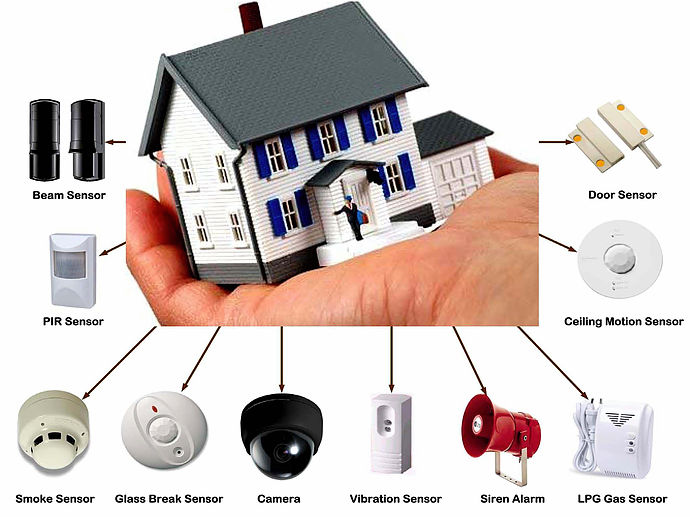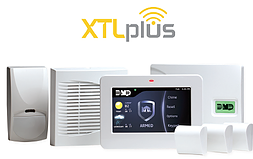How Alarm Systems Work in Home Security or Business Security
Electronic alarm systems are made up of three component parts designed to detect, determine and deter criminal activity or other threatening situations. An alarm system can detect an event such as an invasion, fire, gas leak or environmental changes; determine if the event poses a threat; and then send a notification about the event.
Detect
The component of an alarm system that detects activity is called a sensor. Here are some common types of sensors that may be used to protect your home.
-
Door and window contacts are switches that indicate the opening or closing of a door or window. The switch is mounted to a door or window and is held closed by a magnet attached to the frame. When the door or window moves away from the magnet, the switch opens and is sensed by the alarm control panel.
-
Motion sensors can detect movement or motion in a large room.
-
Glass break detectors are designed to constantly listen for the sound of breaking glass. When the glass break detector hears the sound pattern caused by shattering glass, it sends an electronic signal to the alarm control panel.
-
Shock sensors can detect an intruder that is using force to pound through a wall, roof or other area of the structure.
-
 Carbon monoxide (CO) detectors are used to detect carbon monoxide, an invisible, odorless, colorless gas. Upon detection of CO, the sensor will send a signal to the control panel, which will then emit an audible alarm.
Carbon monoxide (CO) detectors are used to detect carbon monoxide, an invisible, odorless, colorless gas. Upon detection of CO, the sensor will send a signal to the control panel, which will then emit an audible alarm.
-
Panic buttons send an immediate, discreet call for help upon the press of a button.
-
Environmental sensors react to the presence of water or sudden increases or decreases in room temperature.
-
Smoke detectors are designed to detect fire. There are two types of detectors: ionization and photoelectric. The most common smoke detector – ionization – is best used to detect flaming fires without a lot of smoke. Photoelectric detection reacts to smoldering fires that produce large amounts of smoke. Both technologies are required to perform at the same level in a fire and provide the same amount of warning. The most effective smoke detector is one that combines both forms of detection.
-
A Keypad is a device that is used to arm and disarm an alarm system. Keypads are generally installed near the entrance or exit of home. If a door or window is opened when the system is activated, the keypad will immediately initiate an alarm.
Determine
The alarm system control panel is the brain of the system. It carries out the decide function by processing the information it receives from various sensors and responding accordingly. For example, if a door or window is open while the system is disarmed, the control panel ignores the event. But, if a window is opened while the system is armed, it will immediately respond by sending a signal to your alarm monitoring center and triggering an audible alarm.
Alarm system panels have built-in communicators that transmit and receive signals via a phone line. These signals are sent to a central alarm monitoring center where trained dispatchers monitor alarm system signals. In the event of a triggered alarm, a dispatcher will contact you to verify the emergency situation and, if necessary, contact the police or fire station on your behalf.
Deter
An alarm panel responds to a triggered alarm by activating physical alarms such as a siren and/or strobe lights. These devices are used to scare an intruder away from your premises or alert you of a threatening situation, such as a fire or the presence of carbon monoxide.
The component parts of an alarm system work together to detect, determine and deter danger in your home. To ensure your equipment will function properly in the event of an emergency, it is important to conduct regular testing on your systems. Contact an ESA member company for more information.




